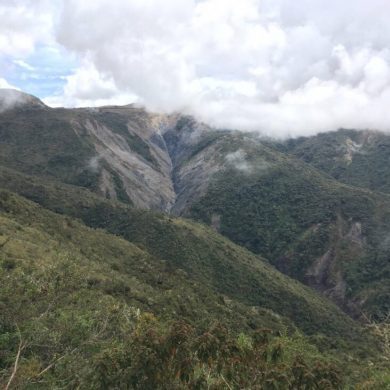Ancient carbon in rocks releases as much Carbon Dioxide as the world’s volcanoes

According to a recent study led by the University of Oxford, natural rock weathering may not act solely as a CO2 sink. The study suggests that this process may also contribute significantly to CO2 emissions, potentially rivaling the output of volcanoes. The findings have important implications for supercomputing climate change modeling.
The research reveals that ancient carbon in rocks may release as much CO2 into the atmosphere as the world's volcanoes. This discovery contradicts the previous understanding that natural rock weathering acted primarily as a CO2 sink. Instead, it could be a significant source of CO2 emissions.
Understanding the impact of ancient carbon in rocks on climate change is crucial. This new information sheds light on an important piece of the puzzle. It's time to update our knowledge and consider the potential consequences of this process.
Are you ready to have your understanding of natural rock weathering turned upside down? New research has shattered the traditional viewpoint that this process acts as a CO2 sink, removing carbon dioxide from our atmosphere. Instead, brace yourself for this shocking revelation: it can function as a colossal source of CO2 emissions, on par with the mighty volcanoes that captivate our imagination. Prepare to explore the mysterious realm where rocks hold secrets that could shape our planet's future!
Rocks contain a large store of carbon, dating back millions of years, from the remains of ancient plants and animals. This "geological carbon cycle" helps regulate the Earth's temperature by absorbing CO2 during chemical weathering. This process counteracts the continuous release of CO2 from volcanoes and forms an essential part of the natural carbon cycle, which has sustained life on Earth for billions of years.
However, the study has discovered an additional natural process of CO2 release from rocks, which is as significant as the CO2 released from volcanoes. This process occurs when rocks that formed on ancient seafloors are pushed back up to the Earth's surface, exposing the organic carbon to oxygen and water, which can react and release CO2. This means that weathering rocks could be a source of CO2, rather than a sink, as previously thought.
Measuring this CO2 release from rocks has been challenging, but the researchers used a tracer element, rhenium, released into water when rock organic carbon reacts with oxygen. Sampling river water to measure rhenium levels made it possible to quantify CO2 release. The researchers then used a supercomputer to simulate the interplay of physical, chemical, and hydrological processes across the Earth's surface to estimate the total CO2 emitted as rocks weather. They identified many large areas where weathering was a CO2 source, particularly in mountain ranges with high uplift rates, such as the eastern Himalayas, the Rocky Mountains, and the Andes. The global CO2 release from rock organic carbon weathering was found to be 68 megatons of carbon per year.
Although this is significantly less than current human CO2 emissions from burning fossil fuels, it is comparable to the amount of CO2 released by volcanoes. Ongoing research is investigating how changes in erosion due to human activities, alongside anthropogenic climate changes, could increase this natural carbon leak. The researchers are also questioning whether this natural CO2 release will increase over the coming century. "Currently, we don't know – our methods allow us to provide a robust global estimate, but not yet assess how it could change," says Professor Robert Hilton, who leads the ROC-CO2 research project that funded the study. The study's findings will help to improve predictions of our carbon budget.

 How to resolve AdBlock issue?
How to resolve AdBlock issue?